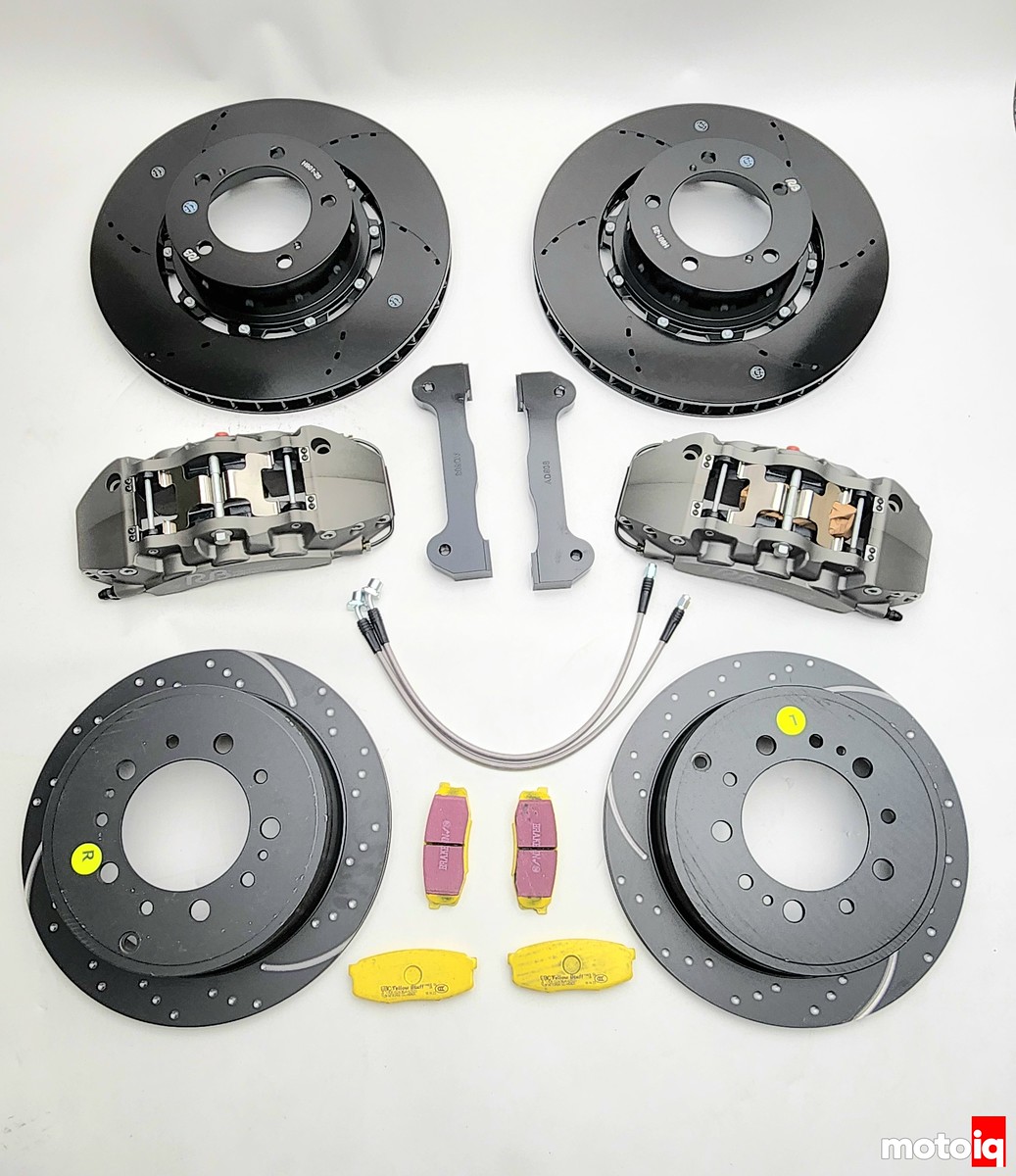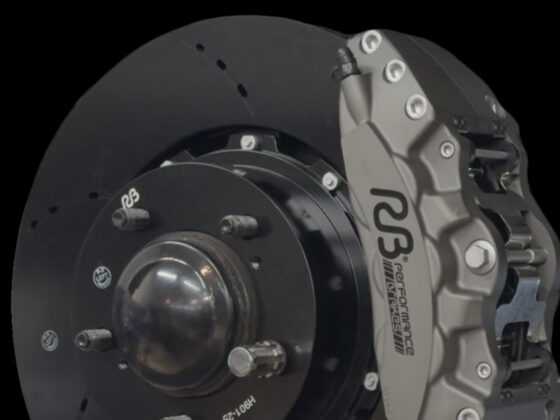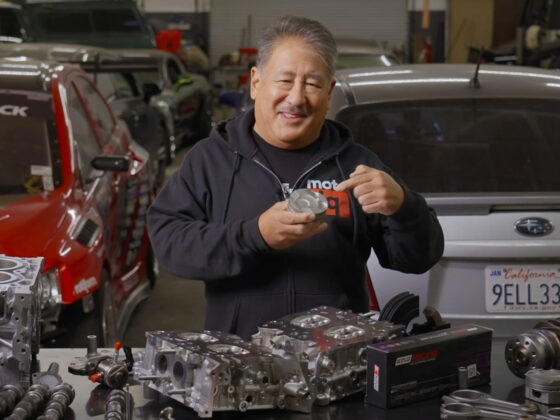
The Figs brakes make our 20″ Volk TE37x wheels look small!

The rear brakes bring the proportions of the front upgrade back into scale.

After some hard bedding in stops you can see the big increase in swept area the Figs brakes have over the TRD parts.

The EBC break-in coating really works and totally evenly seated the rear brake pads quickly while the front brakes will probably take a hundred miles to really seat in.

Man, our Truck looks nice and those brakes really stand out behind our Volk wheels and Nitto Tire!
We didn’t think that the new brakes would make that much of a difference and we had never done a back-to-back test of ear vs radial-mount calipers but the new brakes have a much firmer pedal and way crisper feel which we attribute to the increase in torsional stiffness and the caliper being more inline with the braking forces.
The pedal’s much firmer feel can be partially attributed to the new pads and less fluid in the caliper due to the new pad’s thickness. The crispness, sharper release, and lack of overtravel are probably due to the radial mounting. The new pads have more bite and better torque so the brake force needed to slow the truck is way less giving a feeling of confidence. The increase in pad volume is going to give a longer service life as well.
There are absolutely no squeaks, clunks, rattles, or anything aftermarkety about our brake system at all. Everything is as quiet as a stock truck. The hydraulic proportioning of our system seems to be good as well because our ABS worked fine modulating all the wheels. A lot of time aftermarket big brake kits are way too front-biased and thus possibly require a LONGER stopping distance than stock. We are pretty confident that the Figs Engineering brake kit is going to cure our short rotor life and rotor warping issues once and for all. The much better performance was a great surprise but who is complaining!




12 comments
I’m lost on why a radial mounted caliper is better when it has an adapter that bolts in the same as the TRD?
Yeah, technically the mount shouldn’t be much stiffer, but the caliper itself will flex less. Be interesting to see in FEA. To do it right you need a new hub. I always thought the radial design was too make it easier to install bigger discs on motorcycles. You can just shim it instead of needing new calipers.
The adaptor is bridged and many times stiffer than the OEM ears.
Very nice brakes. Really like the front rotor design. Does the master cylinder flex the firewall? There can be huge improvement in brake feel with a master cylinder brace, at least on compact cars.
Nice looking kit. How do you like the yellow stuff pads? I’m going to throw the blue stuff on my lx470 soon. I like their compounds and the fact that their pads don’t delaminate like other brands.
I haven’t run their stuff in a long time, they used to work well but wore fast and were dusty, these seem not to dust so far.
Hi Mike,
Two quick questions.
Do the Fig’s front pads have a similar coefficient of friction characteristics to the EBC’s?
If running a front brake upgrade such as this, with stock rear calipers, pads, and rotors, is it better from a brake bias standpoint to run pads with a higher coefficient of friction in the rear, if you find that the front end now tends to dive, with increased ABS activity under braking? Assuming that you do not want to add a proportioning valve to the system, and you have factory ABS and traction control present.
I don’t know the mu for the figs pads but the EBC is 0.42. The Figs pads don’t have tons of initial bite which is ok because the brakes have a lot of torque and I got the less aggressive of the two pads offered. The system feels like the pistons are slightly smaller than the TRD calipers. I would like to increase the rear pad volume for longer service life to match the fronts.
Not to be pedantic, but I think the yellows are advertised .48 while the blues are . 52. If you can get orangestuffs their mu is around .6
The Current EBC website doesnt list a Mu for the yellow which were recently reformulated. I found some old information that said .42.
How can I get these products 2017 Tundra
I mean we have links to Figs engineering in the story.